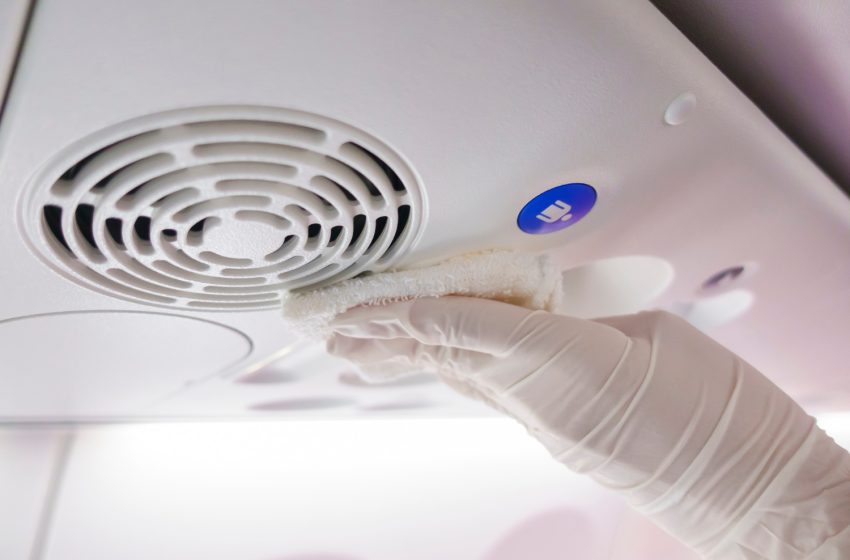5 Signs Your Home Needs More Humidity

Humidity levels in your home can significantly affect your comfort, health, and even the structural integrity of your house. While many people focus on keeping their homes cool in the summer and warm in the winter, the balance of humidity is often overlooked. Maintaining optimal humidity levels—generally between 30% and 50%—is crucial for various reasons, including preventing dryness, promoting healthy air quality, and preserving furnishings. If you’re uncertain whether your home is adequately humidified, here are five signs that it may need more humidity.
1. Dry Skin and Irritated Sinuses
One of the most noticeable signs of low humidity is the impact it has on your skin and respiratory system. If you frequently experience dry skin, chapped lips, or irritated sinuses, it might be due to insufficient moisture in the air. Low humidity can lead to the skin losing its natural oils, causing dryness, itchiness, and even conditions like eczema.
In addition, the mucous membranes in your nose and throat can also become dry and irritated, increasing your susceptibility to respiratory infections and allergies. When the air is too dry, it can cause the lining of your airways to become less effective at trapping germs and allergens, potentially leading to sinus infections and colds.
Solution: To combat this, consider investing in a humidifier for your home. This device adds moisture to the air and can provide relief for your skin and respiratory system. Alternatively, placing bowls of water near heat sources or using houseplants can help naturally increase humidity levels.
2. Increased Static Electricity
Do you find yourself getting shocked every time you touch a doorknob or another person? If so, this could be a clear sign of low humidity in your home. Static electricity builds up when there is a lack of moisture in the air, making it easier for electrical charges to accumulate.
Static cling in clothes is another common symptom of low humidity. You might notice that your socks stick to your pants or that you have to pull clothes apart after taking them out of the dryer. This is especially common in the winter months when indoor heating systems are running, and humidity levels drop significantly.
Solution: Adding moisture to your home can help reduce static electricity. Using a humidifier is the most effective way to address this issue. Also, wearing natural fiber clothing can help minimize static cling.
3. Damage to Wooden Furniture and Floors
Low humidity levels can wreak havoc on wooden furniture and flooring. Wood is a natural material that expands and contracts with changes in humidity. When humidity levels are too low, wood can dry out, leading to cracks, warping, and splits. This is especially concerning for expensive hardwood floors and fine wooden furniture, which can lose their value due to damage caused by low humidity.
You might also notice gaps between floorboards or cracks in wooden furniture. Over time, these issues can worsen, resulting in costly repairs or replacements.
Solution: To protect your wooden furniture and floors, consider using a humidifier to maintain proper humidity levels. Additionally, it’s wise to keep your home’s temperature consistent to minimize fluctuations in humidity.
4. Frequent Nosebleeds and Respiratory Issues
If you or your family members are experiencing frequent nosebleeds, dry throats, or persistent coughing, these can be symptoms of low humidity levels in your home. When the air is dry, it can lead to a decrease in moisture in your nasal passages, making them more susceptible to bleeding.
Dry air can also exacerbate existing respiratory issues, such as asthma or allergies. When your airways are dry, they can become irritated, leading to inflammation and difficulty breathing. Additionally, dry air can make it easier for dust and other allergens to circulate, worsening allergy symptoms.
Solution: Maintaining appropriate humidity levels can significantly reduce these issues. A humidifier can help restore moisture in the air, providing relief from dry nasal passages and respiratory discomfort.
5. Condensation and Mold Growth
While low humidity can lead to dryness, too much humidity can cause condensation and promote mold growth, creating a different set of problems. However, if you’re seeing condensation on windows or walls, it might indicate that the overall humidity levels are inconsistent, or that specific areas in your home are excessively dry compared to others.
When humidity levels fluctuate, areas with higher moisture can encourage mold growth, leading to potential health risks and structural damage to your home. Mold can trigger allergies and respiratory issues, making it essential to address any humidity-related problems promptly.
Solution: If you notice condensation, it’s essential to assess your humidity levels. A dehumidifier might be necessary to remove excess moisture in some areas, while a humidifier can address dryness in others. Regularly check your home for signs of mold and act quickly to eliminate it if found.
Best Air Duct Cleaning: Why It Matters for Your Home
Air duct cleaning is a crucial aspect of maintaining a healthy home environment. Over time, dust, allergens, and other pollutants can accumulate in your ductwork, affecting the quality of the air you breathe. Regular cleaning not only improves indoor air quality but also enhances the efficiency of your HVAC system, potentially lowering energy bills. When selecting the best air duct cleaning service, look for professionals who use advanced techniques and equipment, are certified, and come highly recommended by previous customers. Investing in professional air duct cleaning can lead to a cleaner, healthier home for you and your family.
Conclusion
Recognizing the signs that your home needs more humidity can significantly enhance your comfort and well-being. From dry skin and respiratory discomfort to damage to your wooden furniture and increased static electricity, low humidity levels can create various problems that affect your health and home.
Investing in a quality humidifier, regularly checking humidity levels, and maintaining consistent temperatures can help you achieve the right balance of humidity in your home. By doing so, you’ll not only protect your health but also prolong the lifespan of your furnishings and enhance your overall quality of life.
Click this web: websarticle.com for more!



